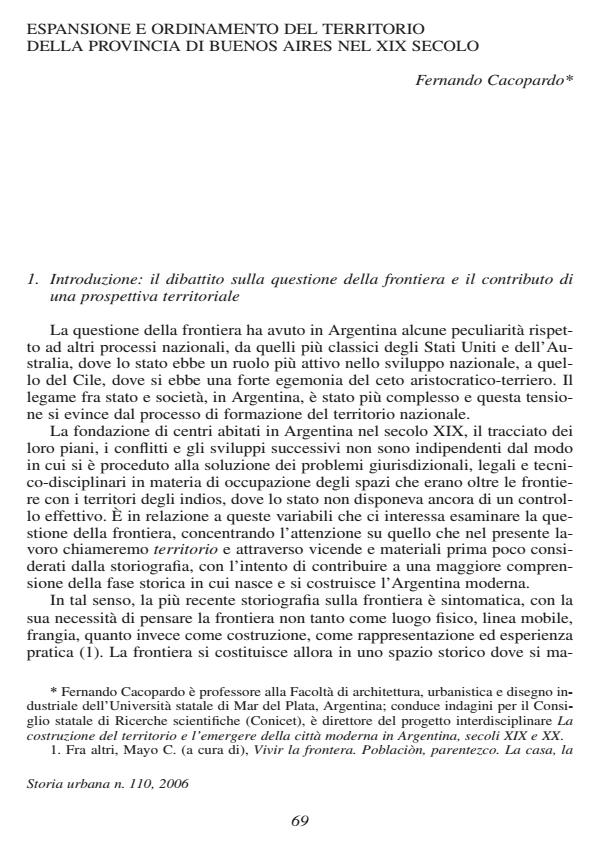Espansione e ordinamento del territorio della Provincia di Buenos Aires nel XIX secolo
Titolo Rivista STORIA URBANA
Autori/Curatori Fernando Cacopardo
Anno di pubblicazione 2006 Fascicolo 2006/110
Lingua Italiano Numero pagine 23 P. Dimensione file 505 KB
DOI
Il DOI è il codice a barre della proprietà intellettuale: per saperne di più
clicca qui
Qui sotto puoi vedere in anteprima la prima pagina di questo articolo.
Se questo articolo ti interessa, lo puoi acquistare (e scaricare in formato pdf) seguendo le facili indicazioni per acquistare il download credit. Acquista Download Credits per scaricare questo Articolo in formato PDF

FrancoAngeli è membro della Publishers International Linking Association, Inc (PILA)associazione indipendente e non profit per facilitare (attraverso i servizi tecnologici implementati da CrossRef.org) l’accesso degli studiosi ai contenuti digitali nelle pubblicazioni professionali e scientifiche
The focal point of this article is the construction of the moveable and complex territorial matrix upon which Argentinian cities and towns have been built. For this reason, the direction of city/territory analysis has been inverted in order to study the territory/city axis. Our question is: what was the role of the Federal government in regulating territorial delimitations? Within this frame, which includes the contemplation of boundaries as constitutive elements of the problem, I will discuss the incidence of the emerging jurisdictional structures political and legal in the construction of the modern territory and the founding of cities in the mid-nineteen and early twentieth centuries. The analysis is based on the province of Buenos Aires, a space considered to be a laboratory and pioneer in the first experiences that would later extend to the rest of the country with the new national territories created in the expansion of the frontier.;
Fernando Cacopardo, Espansione e ordinamento del territorio della Provincia di Buenos Aires nel XIX secolo in "STORIA URBANA " 110/2006, pp , DOI: